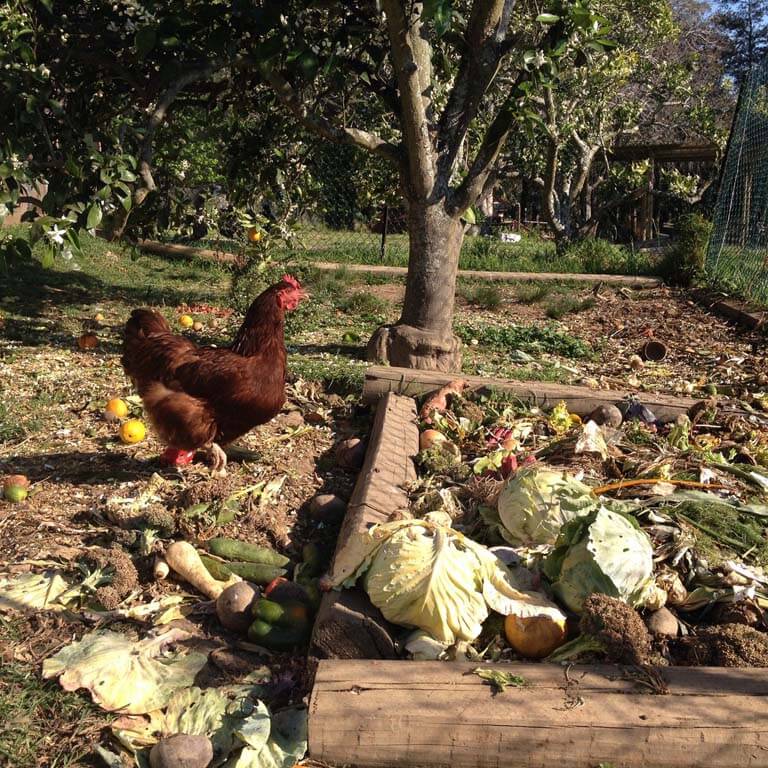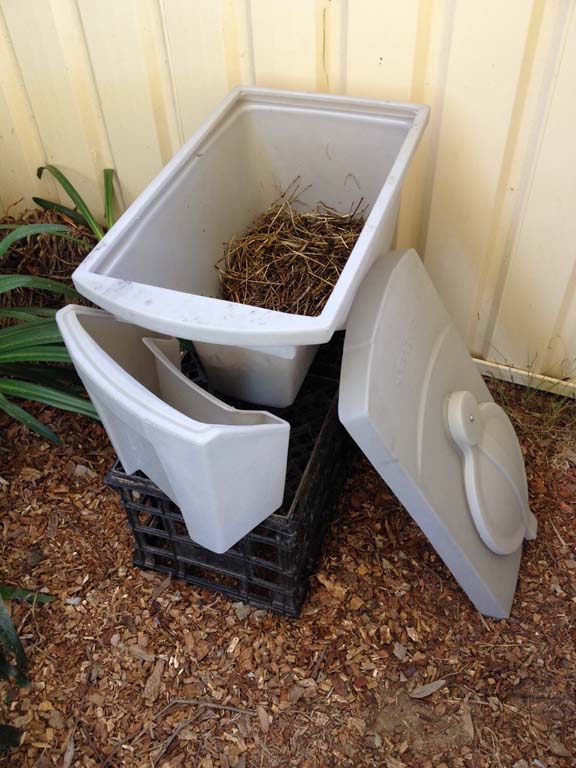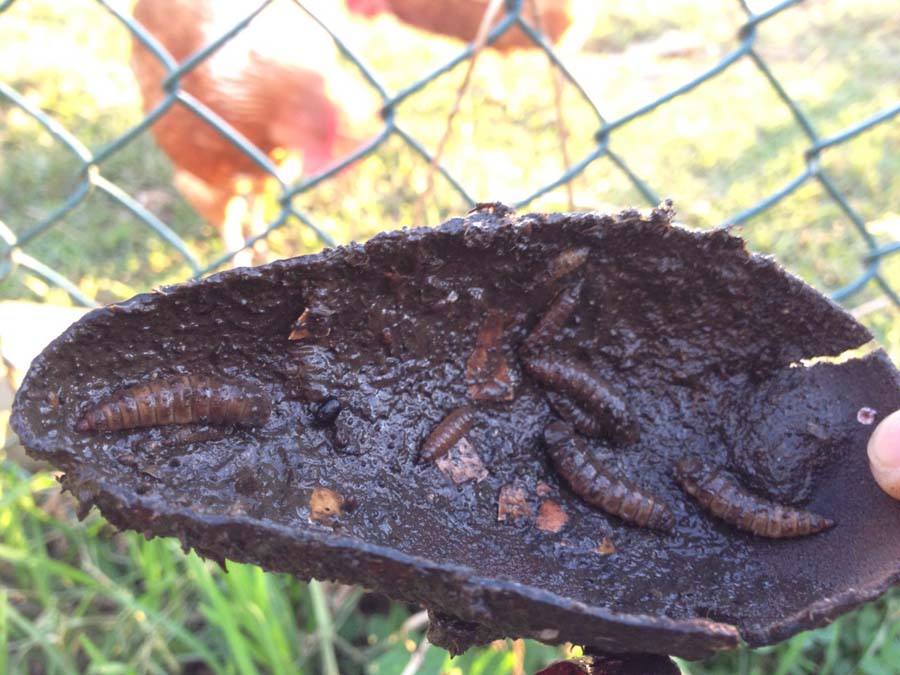Black soldier fly larvae – one of the best kept secrets of sustainable farming
Ever since I heard about the Black Soldier Fly Larvae (BSFL) in an aquaponics course years ago, I thought about their potential as a sustainable form of livestock feed in the developing world.
Why? Well, because the larvae of the Black Soldier Fly (Hermetia illucens) is able to convert organic waste into high quality animal protein that can be used a supplementary feed for fish and chickens. And by organic waste I mean food scraps, vegetable residues, manure and offal, which they are very efficient at bio-converting into a valuable resource.

Picture: Chickens at Common2Us Farm eating veggies scraps
Yet, their most impressive feature is their self-harvest capability. When the larvae reaches maturity, it is genetically programmed to climb out of its food source, providing a great opportunity for designing a container for their collection. A simple box with drainage and a ramp that allows the BSFL to crawl up – while cleaning itself – and drop into a receptacle, does the trick.

Picture: Setting up the BioPod Plus to grow Black Soldier Fly Larvae fed with food scraps and chicken manure
Other advantages of this insect include their lack of odour and dry touch – they are not slimy; absence of mouthparts in their fly form – they won´t eat human food; harmlessness – they don’t sting; and most important, they are safe – they are not associated in any way with the transmission of disease nor considered pests. Moreover, the flies act as a deterrent of the common housefly greatly reducing their number, and thrive on hot environments such as the tropics.

Picture: Some BSFL devouring an avocado peel
Black Soldier Fly Larvae are considered one of the most promising species for chicken and fish feed due to their nutritional content and ability to be fed with pig and chicken manures, up-cycling these abundant waste products. Dried black soldier fly pre-pupae contain 42% protein and 35% fat as well as adequate amino acids and minerals for livestock feed, whereas live pre-pupae consist of 44% dry matter and can easily be stored for long periods.
As a component of a complete diet, they have been found to support good growth in chicks, and studies also show their suitability as replacement for soybean meal in poultry feed. Since chickens need energy, protein, minerals and vitamins in their diet, insects in general and BSFL in particular have the potential to supplement that component of their dietary requirements in a sustainable and cost-effective way.
Which leads to why I think BSFL present an incredible opportunity for supporting small livestock systems in developing countries which tend to be managed by women. Because breeding BSFL as supplementary chicken feed can enhance egg productivity while ensuring their nutritional-density sustainably, thus supporting food and nutrition security outcomes for poor households. This is partly what the Food and Nutrition Hub project is about, which I am about to start implementing in Timor-Leste.
Prior my departure I have been testing the BioPod Plus system and feeding the BSFL to our chickens at Common2Us Farm, where I lived for the last 9 months. I encourage you to browse YouTube videos where you can see different systems in action and the frenziness with which they breed. Yet, of course, anyone who has raised chickens knows how much they love insects. Wait until you see them devouring the Black Soldier Fly Larvae!

Picture: Our ladies devouring the BSFL after tipping the collector receptacle
For further information on the project Gianna is working on, visit www.FoodAndNutritionHub.org or read about it in a webinar hosted by the Food Tank recently.
Twitter: @GiannaBonis @FNHub_Timor
By Gianna Bonis-Profumo, 15 Oct 2015


